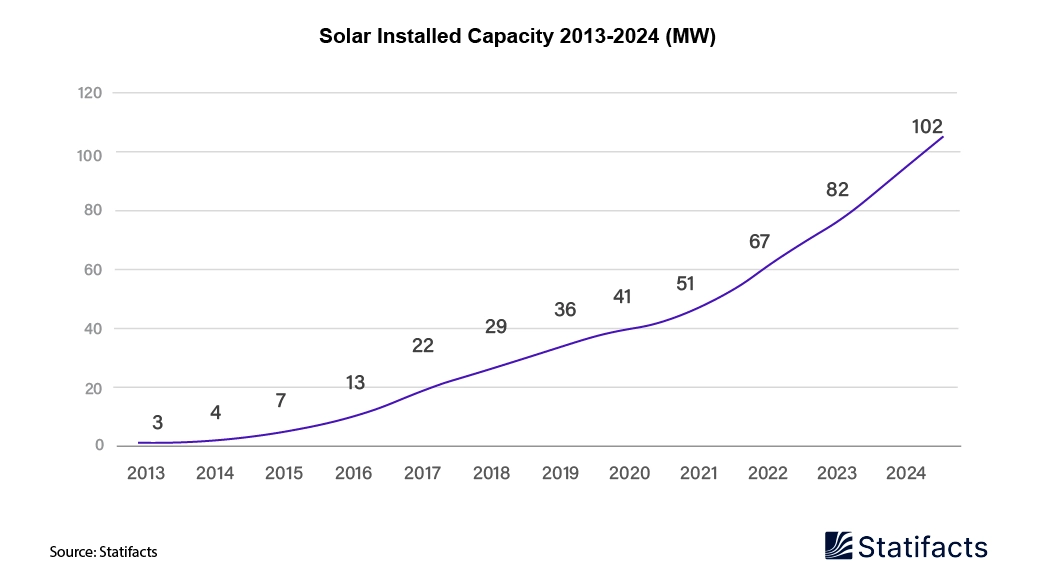
April, 2025
India achieved a significant milestone in its renewable energy journey in February 2025, with solar power accounting for nearly 63.95% of its total renewable energy generation. The Indian government has set an ambitious target of achieving 500 GW of renewable energy capacity by 2030, with solar power playing a significant role in meeting this target. Achieving this milestone will place India among the top nations globally in renewable energy capacity.

The Indian solar energy market, particularly the solar panel industry, is projected to experience significant growth, driven by the country's increasing energy demand and commitment to renewable, low-carbon sources. This growth is fuelled by the declining cost of solar power technology, increased flexibility of solar systems, and supportive government policies. The solar PV segment, a crucial part of the solar panel industry, is expected to dominate the market due to the decreasing cost of solar modules and their adaptability for various uses.

There are many variations of passages of Lorem Ipsum available, but the majority have suffered alteration in some form
URL TO BE USED AS REFERENCE LINK:
Placeholder content for this accordion, which is intended to demonstrate the .accordion-flush class. This is the first item's
accordion body.
Placeholder content for this accordion, which is intended to demonstrate the .accordion-flush class. This is the second item's
accordion body. Let's imagine this being filled with some actual content.
Placeholder content for this accordion, which is intended to demonstrate the .accordion-flush class. This is the third
item's accordion body. Nothing more exciting happening here in terms of content, but just filling up the space to make it look, at least at
first glance, a bit more representative of how this would look in a real-world application.
Do you still any question?
Feel free to contact us anytime using our contact form or visit our FAQ page.
Your contact to the Infographics Newsroom
